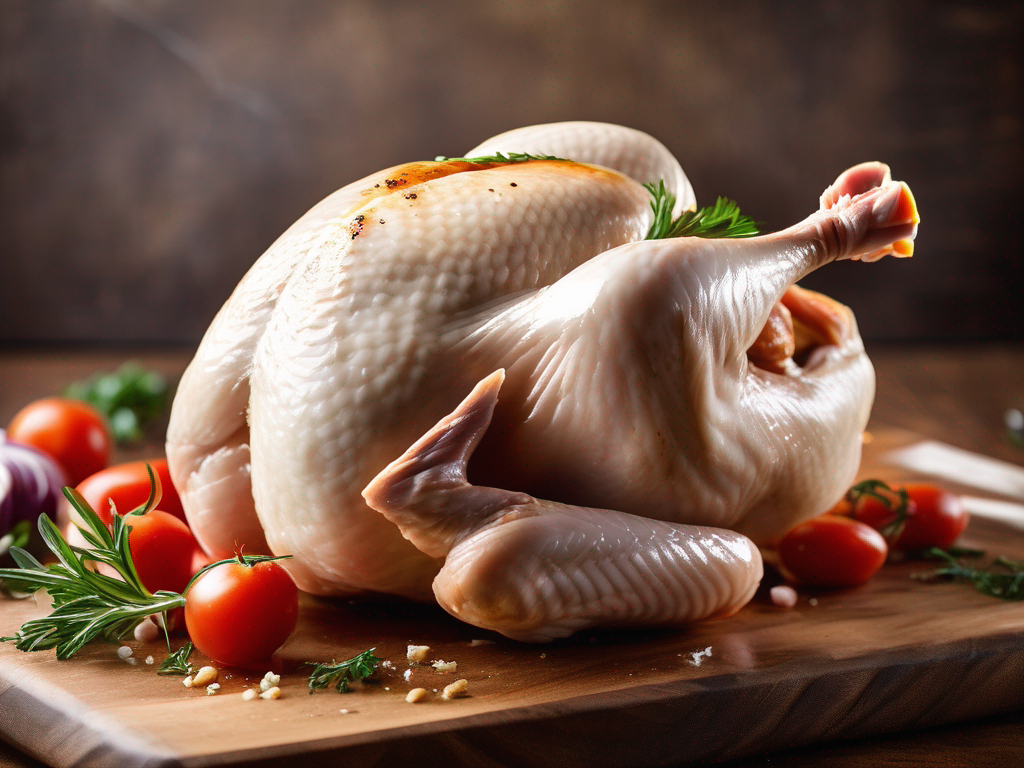
The Complete Guide to Safely Defrosting Chicken Whole Fresh Raw Sold Refrigerated Not Frozen
Get Your Free Food Safety Cheat Sheet
30 most common foods with instant answers. Print it and stick it on your fridge—completely free!
The Complete Guide to Safely Defrosting Chicken Whole Fresh Raw Sold Refrigerated Not Frozen
When it comes to handling and preparing chicken, ensuring proper defrosting is essential to prevent foodborne illnesses. In this comprehensive guide, we will walk you through the steps to safely defrost chicken whole fresh raw sold refrigerated not frozen for consumption. (Chicken whole fresh raw sold refrigerated not frozen)
Why Proper Defrosting is Important
Properly defrosting chicken helps maintain its quality and minimizes the risk of bacterial contamination. When chicken is not defrosted correctly, harmful bacteria can multiply rapidly, leading to foodborne illnesses like salmonella and E. coli. By following the correct defrosting methods, you can ensure that your chicken is safe to eat and delicious to enjoy.
Steps to Safely Defrost Chicken Whole Fresh Raw Sold Refrigerated Not Frozen
-
Refrigerator Method
- Place the chicken in its original packaging or a sealed container to prevent cross-contamination.
- Place the chicken on a plate or tray to catch any drips and place it on the bottom shelf of the refrigerator.
- Allow the chicken to defrost in the refrigerator for 24-48 hours, depending on its size.
-
Cold Water Method
- Fill a large bowl or sink with cold water.
- Submerge the sealed chicken in the cold water, ensuring it is completely covered.
- Change the water every 30 minutes to maintain a safe temperature.
- Defrosting using this method typically takes 1-3 hours, depending on the size of the chicken.
-
Microwave Method
- Use the defrost setting on your microwave and follow the manufacturer's instructions.
- Rotate and turn the chicken frequently to ensure even defrosting.
- Cook the chicken immediately after defrosting in the microwave to prevent bacterial growth.
-
Cooking from Frozen
- While it is best to defrost chicken before cooking, you can also cook it from frozen.
- Increase cooking time by 50% and use a meat thermometer to ensure the chicken reaches a safe internal temperature of 165°F (74°C).
Safety Tips for Defrosting Chicken
- Always defrost chicken in the refrigerator, cold water, or microwave to prevent bacteria growth.
- Do not defrost chicken at room temperature as it can lead to rapid bacterial growth.
- Never refreeze chicken once it has been defrosted, as this can compromise its quality and safety.
- Wash your hands, utensils, and surfaces thoroughly after handling raw chicken to prevent cross-contamination.
- Use separate cutting boards and utensils for raw chicken to avoid contaminating other foods.
Conclusion
Properly defrosting chicken whole fresh raw sold refrigerated not frozen is crucial for ensuring food safety and enjoying a delicious meal. By following the recommended methods and safety tips outlined in this guide, you can protect yourself and your loved ones from foodborne illnesses while savoring the flavors of perfectly cooked chicken. Remember, when in doubt, always prioritize food safety and handle chicken with care. [Click here](/food/chicken whole fresh raw sold refrigerated not frozen) for more information on handling and storing chicken. (Chicken whole fresh raw sold refrigerated not frozen)
Related Posts
Here are some other articles you might find helpful:
Authoritative Food Safety References
These agencies and university labs inform every tip and health precaution we publish.
USDA FoodKeeper – Cold Storage Guidelines
Official refrigerator, freezer, and pantry timelines maintained by the U.S. Department of Agriculture.
Visit USDA FoodKeeperFDA Produce Safety Rule & Grower Guidance
Field-to-fridge handling practices that prevent contamination of fruits, vegetables, and leafy greens.
Visit FDA Produce SafetyCDC Foodborne Illness Prevention Hub
Surveillance-backed guidance on pathogens, symptoms, and steps to reduce foodborne illness risk.
Visit CDC Food SafetyUC Davis Postharvest Technology Center
University research detailing optimal storage atmospheres for produce after harvest.
Visit UC Davis PostharvestPenn State Extension – Home Food Preservation & Safety
Peer-reviewed extension bulletins on safe canning, chilling, and reheating practices.
Visit Penn State ExtensionGet Your Free Food Safety Cheat Sheet
30 most common foods with instant answers. Print it and stick it on your fridge—completely free! Want more? Upgrade to the complete guide with 70+ foods.
Scan your food directly and get instant safety info using our AI-powered camera feature.